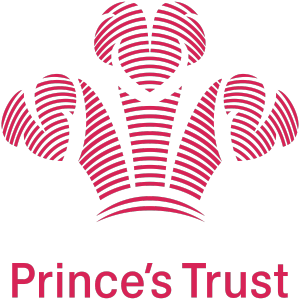
How to attract candidates in 2020
Are you planning your recruitment strategy for the year ahead? Have you considered how you will bring the next generation into your workforce?
Here at Access Generation, we have put together some top tips based on insights from our Employment Accessibility research and validated our findings with some of the predicted recruitment trends for 2020.
Current labour market and recruitment challenges
Before we share our top tips, let’s take a moment to look at the current labour market and recruitment challenges.
- In the latest Quarterly Recruitment Outlook report by the British Chamber of Commerce, 54% of employers attempted to recruit and of these employers, 73% said they had experienced difficulties in recruiting
- The Labour Market Outlook report by CIPD reported similar numbers of employers struggling to recruit with the most hard-to-fill vacancies falling in public sector industries with healthcare topping the list (75% of healthcare employers struggling to recruit)
- The Financial Times reported five UK sectors struggling with labour shortages; Hospitality, IT, Construction, Healthcare and Leisure
- The challenges to recruitment faced by employers include; Pace of change, technology, skills shortage and ageing workforce
- There are 896,000 people employed in zero-hour contracts (during April-June 2019). This equates to 2.7% of the working population in insecure jobs (Office of National Statistics).
What does all this mean for employers?
It is time for employers to think differently about the ways they recruit and who they attract to their vacancies. Relying on experienced candidates only is no longer an option. Employers must adapt and be willing to recruit from different talent pools including, but not limited to, inexperienced young adults and those furthest from the labour market such as those with hidden conditions or disabilities.
Top tips to attract candidates in 2020
The following top tips are based on the views of more than 200 young people and our peer panels research on 600 employer websites.
Become an employer of choice
“Young people want to know what you do and why” – Suraya, peer panel member
When it comes to being an employer of choice, you have to demonstrate your employer branding including your culture, values and purpose.
We know that 80% of young people will review an employers website before applying regardless of where they first see a job advertised.
This means you have to provide evidence in order to attract this new generation who were born into a digital world and can spot fake news.
In our Employment Accessibility research we found 3 out of 4 organisations failed to promote themselves as an employer. Most organisations are great at promoting their product or service but fail to promote what it is like to be an employee.
It’s important to be authentic in order to attract candidates and to retain them once they have joined.
If you promote something that doesn’t exist in your culture then your retention rate will drop.
In Glassdoor’s recruitment trends predictions this year, they talk about the need for ‘culture to come first’.
“In a world of increasing transparency and corporate accountability, a strong company culture is no longer a nice-to-have — it’s a business imperative.” – Glassdoor
Becoming an employer of choice goes hand-in-hand with retention-focussed hiring which was listed as a recruitment trend by Haver.
As seen in the labour market reports above, recruitment is a struggle. It is no longer the employer assessing the candidates, the candidates are now assessing the employer against their own criteria.
How to become an employer of choice
- Consider how you can evidence how you live by your values and let your customers talk about what this means to them and let your employees talk about your workplace culture.
Embrace diversity and inclusion
“We want to see diversity and inclusion represented in the workplace.” – Adil, peer panel member
When it comes to young people’s criteria for choosing an employer, then those employers that embrace diversity and inclusion will meet one of their top choices.
Talent Lyft predicts that diversity and inclusion will become a priority for HR professionals in 2020.
“Workplace diversity has many benefits. A study by McKinsey & Company found that companies with gender and racial diversity were 35% more likely to have higher financial returns.” – Talent Lyft
In our research, only 5% of employers evidenced a positive attitude towards diversity and inclusion.
Employers commonly include policies on equality, modern slavery and gender pay gap (this is a legal requirement for organisations with over 250 employees) but go no further into the topic of diversity and inclusion.
The Equality Act 2010 was brought in and designed to replace several other prior pieces of legislation. Under this act discrimination is defined as unfair, unjust or prejudicial treatment of a person on the basis of sex, gender, race, disability, age, religion or national origin. This is something every employer needs to be aware of and address if they want to be inclusive to all.
How to embrace diversity and inclusion
- Introduce anonymity in the recruitment process – remove bias
- Include visual images of diversity in the workplace – if a young person sees themselves represented in the workplace they will feel they would be accepted
- Inclusion and diversity starts within the workplace – focus on existing employee engagement
For more on diversity and inclusion see our report on the views of students from a black, Asian, minority ethnic background.
Consider the candidate as a customer
“If I have to register an account before knowing the next steps of the process it would be put me off applying.” – Sarah, peer panel member
The candidate journey and experience has featured in many top recruitment trend predictions this year (PageUp, Response).
Did you know, your website has seconds to engage someone and less than a minute to retain their attention to keep them from bouncing off your site?
73% of all job seekers of all ages would apply for a job on a mobile device (REED).
Some recruitment processes still require you to download, print and scan applications but access to such facilities is not always possible for candidates particularly when applying on mobile.
Remember, the latest generation are digital natives and will be comparing the job application experience to other online activities such as shopping and gaming. For example, you can browse before registering on Amazon and the checkout and delivery process is clearly stated. Do you do the same for your job application process?
How to consider the candidate experience
- Review your website and put yourself in the candidate shoes
- Make sure your recruitment process is optimised for mobile
Do you know how to meet and match young people’s expectations? Find out more about the accreditation here.
















